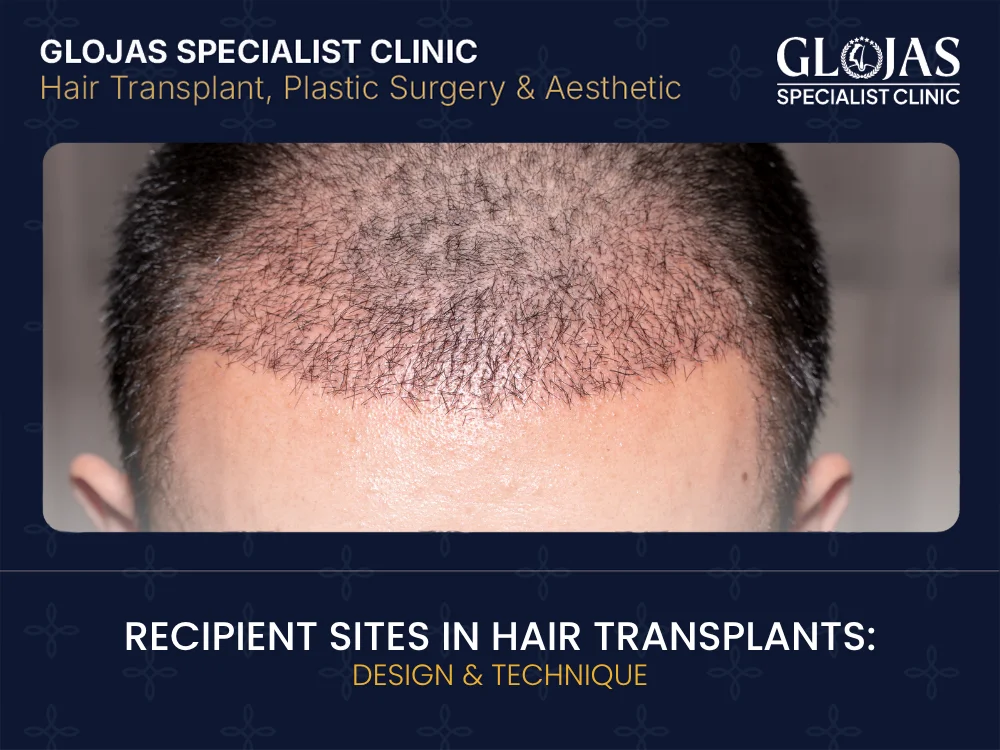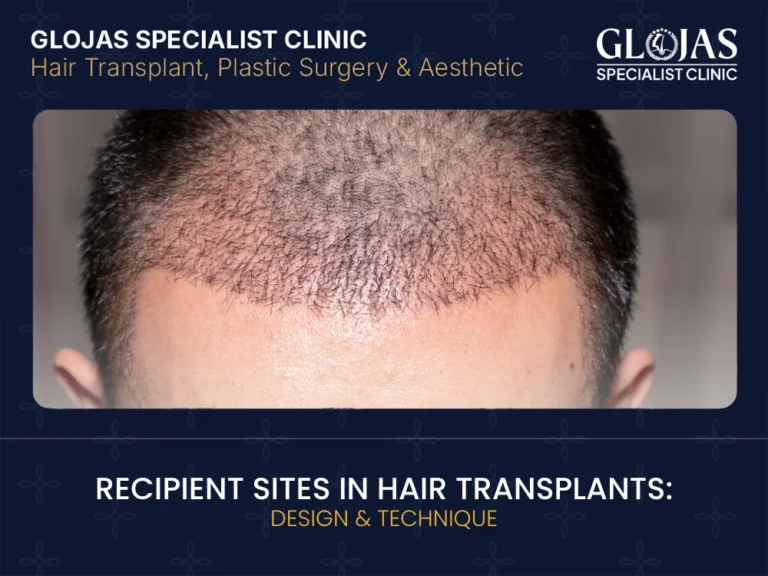When planning a hair transplant, one of the most critical steps is crafting the recipient sites — the tiny slits or pockets on the scalp where grafts will be placed. The design, angle, depth, and spacing of those sites largely determine how natural the result looks, how well grafts survive, and how the hair flows. In this blog post, we dive deep into recipient sites—their design, technique, challenges, and how expert execution makes all the difference.
What Are Recipient Sites and Why They Matter
“Recipient sites” refer to the locations on the scalp where harvested follicular unit grafts are implanted. These sites are not mere holes; they are carefully planned incisions or slits made at specific angles, widths, and depths to accommodate individual grafts. The way these sites are designed influences:
- The angle and direction of hair growth (to mimic natural hair pattern)
- The density and spacing of grafts (to avoid overpacking, “popping,” or compromised blood supply)
- The survival of grafts (snug fit, minimizing trauma, preserving perfusion)
- The healing, scarring, and cosmetic surface appearance (avoiding pitting, ridging, or visible scars)
In short: recipient sites are where artistry and surgical precision meet. A beautifully harvested graft can only perform if the recipient site allows it to “settle in” with minimal stress and optimal orientation.

Principles of Recipient Site Design
To design excellent recipient sites, experienced surgeons adhere to several guiding principles:
1. Angle, Direction & Hair Flow
The incisions must follow the natural hair pattern—particularly at the hairline, temples, midscalp, and crown (vertex). That means choosing angles that cause hair to sweep, curve, or swirl as nature intended. In zones with existing hairs, the new sites must not transect native follicles but blend harmoniously.
2. Depth & Width (Micro-match to Graft Size)
Recipient slits are sized to match the follicular units. If the slit is too small (graft must be squeezed in), it risks crush injury or compromised blood supply. Too large, and grafts may move, tilt, or lie poorly.
Depth must be controlled: too shallow can lead to pitting (graft sits too low); too deep can lead to ridging or damage to deeper vascular tissue.
3. Spacing & Density Strategy
It’s tempting to pack grafts densely, but overzealous density risks impairing blood flow or causing “popping” (grafts ejecting during placement) or desiccation. The surgeon must balance desired aesthetic density with biological safety. Typically, density is higher near the frontal hairline and lower toward the crown.
4. Shape, Grid, & Irregularity
While grids help with planning, a perfectly regular grid looks unnatural. Surgeons introduce subtle irregularity (“irregularly irregular”) in the hairline transition zone for a natural edge.
5. Protecting Blood Supply & Minimizing Trauma
Recipient site creation should not injure deeper vessels or compromise perfusion. Techniques to limit trauma include tumescent (lifting) solutions, shallow incisions, and careful handling.
Techniques & Instruments for Recipient Site Creation
Achieving optimal recipient sites involves selecting the right tool or method. Here are the commonly used techniques:
Hypodermic Needles (Standard)
Fine hypodermic needles are versatile and widely used. Depending on graft size and surgeon preference, gauges vary (e.g., 18G to 23G). They allow precise slits and are useful when grafts are varied in size.
Custom Blades / Slit Blades / Chisels
Surgeons often cut blades to exact widths needed during surgery (for example 0.6 mm to 0.9 mm) so slits match graft profiles. Lateral slits (also called coronal slits) are preferred by many because they allow better control over hair direction and fanning of grafts.
Implanter Pens / “Stick-and-Place”
With implanter pens, the surgeon can simultaneously create a recipient site and insert the graft. This reduces graft handling time, but requires strong skill to maintain angle, depth, and spacing.
Robotic & Automated Slit Creation
Some advanced robotic systems (e.g., ARTAS) can programmatically create sites based on image guidance, avoiding damage to existing hairs and distributing sites judiciously. This is especially useful in large sessions or complex topographies.
Challenges, Pitfalls & Risk Mitigation
Even with good planning, surgeon experience is vital. Here are risks and how they’re mitigated:
- Popping: Grafts ejecting from slits during insertion. Prevented by carefully sized slits and measured force.
- Graft Compression / Crush Injury: Forcing a graft into too-tight site damages viability. Correct slit sizing and gentle insertion prevent this.
- Poor Perfusion / Necrosis: Overpacking or trauma to blood supply reduces graft survival.
- Pitting or Ridging: Mis-depth placement causes shallow or deep depressions.
- Transection of Native Hairs: Especially in zones with residual hair, creating sites without damaging existing follicles is delicate.
- Scar tissue / Poor recipient bed: Grafting into scarred areas is more difficult; blood supply is compromised. Yet skilled surgeons can take extra care to condition the bed.
Good technique, magnification (loupes or microscopes), and intraoperative adjustment are key.
Workflow: From Planning to Placement
Here’s a simplified flow of how recipient site design fits into the surgical plan:
- Pre-op Planning: Assess hair loss pattern, donor supply, scalp laxity, patient hair texture, and direction.
- Mapping & Sketching the Hairline: Determine where the frontal transition zone shall be, the shape, irregularity, and zones of density.
- Graft Sorting: Categorize harvested grafts by size (1-hair, 2-hair, 3-hair, etc.).
- Recipient Site Creation: Using chosen tools, the surgeon makes incisions/slits following the planning, adjusting as needed.
- Test Fitting: Occasionally, grafts are tested in slits to ensure fit and minor adjustments.
- Graft Placement: Grafts are implanted carefully, ensuring they sit flush, match angle, and aren’t twisted or forced.
- Post-placement Checks: Inspect for pitting, graft alignment, uniformity, and leftover tension or bleeding.
When properly executed, this workflow yields natural-looking, long-lasting results.
Recipient Sites: Real-World Examples & Case Considerations
- In a patient with a Norwood 4A pattern, a surgeon may use about 36 grafts per cm² in the frontal zone, creating slits that leave virtually no space between them.
- In a crown / vertex region, special attention must be paid to swirl / whorl patterns. The transition from circular to linear zones must be gradual and harmonious.
- For ethnic or thick, coarse hair, slit sizing may be slightly larger to accommodate bulkier grafts; but care must still be taken to preserve survival.
- In repair or scarred zones, surgeons may precondition the bed (e.g. via micro-needling, PRP) to improve vascular response before creating recipient sites.
Why Certification & Experience Matter
Because the success of a hair transplant often hinges not on the harvesting but on the recipient sites, choosing a clinic with surgeons certified by credible boards (such as ABHRS or ISHRS) and decades of experience is essential. At GLOJAS Specialist Clinic, we bring over 25 years of expertise, fully ABHRS and ISHRS certified, with meticulous recipient site planning and execution at the heart of every surgery. Let us help you achieve natural, lasting results with the highest standards of safety and artistry.
Frequently Asked Questions (FAQs) on Recipient Sites
- What is the ideal number of grafts (sites) per square centimeter?
There’s no one ideal number. It depends on the patient’s scalp vascularity, donor supply, tissue quality, and aesthetic goal. In practice, ~30–40 grafts/cm² is typical in frontal zones, though some may push higher in favorable cases. - Can the recipient site design prevent “pluggy” or unnatural looks?
Yes. Natural spacing, irregular edges, proper angle, and gradual density transitions all help avoid the “pluggy” appearance. The skill in recipient site creation is central to naturalness. - How soon after creating recipient sites are grafts placed?
Usually immediately in the same operative session: the slits are fresh, with minimal bleeding, and grafts are placed before swelling or clotting interferes. Delays can impair graft viability. - Do robots make better recipient sites?
Robotic systems (e.g. ARTAS) can enhance precision and distribution, but they are not a substitute for human judgment. A skilled surgeon should supervise and possibly adjust robotic site planning. - Can recipient sites heal poorly or leave scars?
Yes — if incisions are too deep, too wide, or trauma is excessive, pitting or visible scarring may result. That’s why technique and magnification are important. - Is denser always better?
No — extreme density risks jeopardizing blood supply and may lead to lower graft survival. The balance between density and perfusion is crucial. - Does the slit method (lateral vs sagittal) matter?
Yes. Lateral (coronal) slits often allow better hair fanning and control of direction, but the best choice depends on the surgeon’s skill, hair characteristics, and recipient area. - Can you create recipient sites in scarred or previously transplanted areas?
Yes, but it is more challenging. Vascular supply may be reduced, and scar stiffening may make site creation tougher. Surgeons may need to adjust techniques or precondition the scalp. - How is site depth controlled clinically?
Surgeons often use the bevel of the blade, experience, and sometimes test cuts on similar tissue. Magnification tools (loupes, microscopes) help ensure consistent depth. - Does patient hair texture affect recipient site design?
Yes. Coarser, thicker hairs may require slightly larger slits to avoid bending or damage. Curl or kink direction must also be factored into angle planning.
Conclusion
Recipient sites are the unsung heroes of any successful hair transplant. Their design, execution, and care determine how natural the hair looks, how well grafts survive, and how satisfied the patient will be. Whether using needles, custom blades, implanter pens, or robotic systems, mastery of angle, depth, spacing, and vascular preservation is what separates average outcomes from outstanding ones.
At GLOJAS Specialist Clinic, with over 25 years of expertise and full ABHRS / ISHRS certification, we place recipient site craftsmanship at the core of our approach. If you’re exploring hair restoration, let us show you what precision and artistry can do.
📞 Contact GLOJAS Specialist Clinic today to learn how we can plan your optimal recipient site design and deliver results that look and feel natural.
